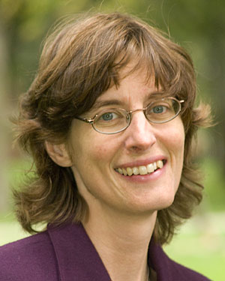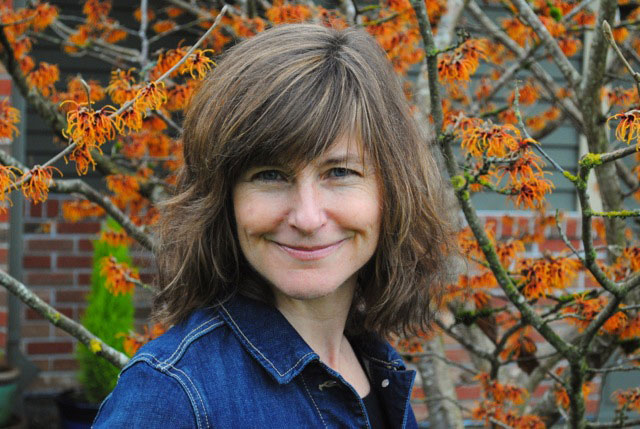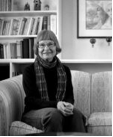For Young Readers
In This Issue
At the “Mennonite/s Writing: An International Conference” held at Goshen College in 2002, Elaine Sommers Rich paid special tribute, in absentia, to Barbara Claassen Smucker for the many books she had written for young readers, most notably Henry’s Red Sea (1955). Other than that brief moment, apparently no other serious attention has been given to Mennonite writing for young readers, whether at the large Mennonite literature conferences or in published scholarly writings. This, despite the fact that the earliest successful literature written by U.S. and Canadian Mennonites was for children, stemming from books by Claassen Smucker and Elizabeth Hershberger Bauman in the mid-1950s.
The recent surge in handsomely illustrated books for children by Mennonite writers calls attention to this important area of creative writing and publication. Perhaps this issue of the Journal of the Center for Mennonite Writing will inspire more such books and the serious consideration that they deserve.
To that end, the CMW editors asked Kathy Meyer Reimer to write a preliminary critical survey of Mennonite children’s books. She decided to focus on the publications of Herald Press, the book division of the Mennonite Publishing House, since most such books have come from that press. Kathy identifies four different “eras” and at least five different kinds of books published for children by Herald Press and, in general terms, relates them to publications for children in secular presses in the U.S. Her survey and analysis need also to be applied to children’s books published by the former denominational Faith and Life Press and by Good Books of Intercourse, Pennsylvania, an independent trade publishing house founded by Mennonites, as well as those published by commercial trade houses.
For very young children, the illustrations that accompany the printed text are as important as the words in the book. We are privileged here to look over the shoulder of graphic artist Ingrid S. Hess as she describes how she proceeds to develop visuals for the books that she illustrates. Her essay is replete with colorful examples of the bold, stylized, “flat” artwork that is a trademark of her style. Ingrid, who teaches at the University of Notre Dame, also agreed to let us publish a presentation she was asked to give, regarding her work, to a meeting of Jesuits in California during the past year.
Barbara Nickel has previously won awards for her books for older children, including fictionalized accounts of classic European composers, drawing on her experience as a violinist. Like Sarah Klassen, the “featured poet” in this issue, she has also published several collections of poetry for adults. “Schnee 1939” is the first chapter of her novel-in-progress, now titled “September Cold,” which, like much Canadian Mennonite literature for adults, draws upon the historical accounts of Western Canadians, who were immigrants to the prairies from Prussia and Ukraine.
Of her plans for the novel, Barbara says: “This is a historical children’s novel that explores the relationship between two cousins who have never met, and their perspectives as German Mennonite children on either side of the Atlantic during World War II. Allegiances to country, family, and faith will be tested in complicated ways as their friendship deepens despite distance in the midst of one of the world’s greatest conflicts. The novel is based on much of my family history. My maternal grandfather emigrated to Saskatchewan in 1921 from the Danzig area, which (since WWI) was a city-state independent from Germany, although much of the population was German. He left most of his family behind, joining a farming community of Mennonites (Prussian, from the same area he’d left) who had emigrated decades earlier. My mother’s first cousin lived in Danzig, and her birthday party actually was cancelled because of the Battle of Westerplatte that opened World War II.” One incident in this opening chapter is adapted from a story told by the Canadian poet Patrick Friesen.
In the context of Kathy Meyer Reimer’s survey, it is intriguing to consider whether the work of Ingrid Hess and Barbara Nickel fits into the same paradigms of authorial intent and genres that Kathy finds in her four eras of publications. One might look for continuities, also, in the six poems published here by our “featured poet,” Sarah Klassen. Is it possible to see in her poems for sophisticated adult readers, intentions and subjects parallel to those of the writers for children discussed in this issue? In what ways do her poems demonstrate an ethical engagement with the world around her? There are no exemplary biographies in these particular poems--although one of her books of poetry focuses on the work and life of philosopher and mystic Simone Weil—but rather a deep engagement with nature, a clarity of observation, and especially in the last poem, a strong sense of social responsibility. And do we find in her poems a word and sound “magic” that might appeal, in an animated oral reading, to children too young to understand the poems’ full intentions?
In this issue:
-
10
read more

Passing on the Faith: Mennonite Writing for Children
by Kathy Meyer ReimerMennonites claim a strong heritage of women writers--in children’s and adolescent literature. In examining the trends of publishing at Herald Press, the book division of the Mennonite Publishing House at Scottdale, Pennsylvania, a number of distinct waves of literature become clear. I will examine the trends from Herald Press, not because it is the definitive press for Mennonite authors or illustrators, but because it has consistently published literature for children over the past 60 years. In each era of publishing, I will suggest some examples. They are not comprehensive, but representative of a specific genre, emphasis or style of writing …
-
0
read more

Some Things I Think About While Illustrating
by Ingrid HessTo see Ingrid Hess's colorfully illustrated article about her work, click on the title above.
-
0
read more

On Frosting and Broccoli
by Ingrid HessAs presented to a meeting of Jesuits at “Search for Meaning,” the 2010 Pacific Northwest Spirituality Book Festival, Feb. 13, 2010. Also at College Community Mennonite Brethren Church, Fresno, April 4.
-
0
read more

Schnee, 1939
by Barbara NickelThe sky makes him stumble out of the barn. That excuse would make Papa snort. He’d say, “If not the sky something else -- a bucket, a clod of frozen horse manure -- my son would stumble over a fly in his path.” But just out the barn door, Art’s on his knees and can’t take his eyes off the sky, huge and strange with something about to happen. There’s a heap of dark clouds, like waves tossing a battleship that’s shelling enemy ships trying to hide in enemy clouds.
Shelling the enemy. He should try to erase that …
-
1
read more

Poetry Feature: Six Poems
by Sarah KlassenCMW is pleased to introduce readers to a group of new poems by award-winning Canadian poet Sarah Klassen, the “featured poet” of this issue. In these six poems Sarah explores the mystical possibilities indwelling in the moments of a life lived with full presence. Natural imagery evokes the prairie landscape of Winnipeg and its surroundings. In “Prairieology” the landscape becomes suffused with spiritual significance—offering, in the spirit of Emily Dickinson, a natural language for the divine that both grounds and replies to theology. “Rising” and “Deep Bay Reflection” suggest the poet’s awareness of the interconnection between all created things, evoking the tension between what we can and cannot see, as well as what we refuse to see. In “After the Fall” the poet is forced to remember her bodily limits as she skis after an accident—aware of the brain’s mad flights of fancy as well as its keen powers of observation. “Bird” invites the reader to meditate on the ways in which we invest birdsong with human longing. “On Poverty” challenges viewers to investigate their attitudes towards human nature. –A.H.